On June 6, 1944, the Allied forces launched one of the most pivotal military operations of the 20th century – the D-Day landings on the shores of Normandy, France. Two of the five main beaches targeted that day were Omaha and Utah, where American troops faced a daunting task to secure a foothold in northern France. The courage and sacrifice displayed by these infantry divisions marked a turning point in the war, paving the way for the liberation of Western Europe. While the battle was grueling, the strategic importance of the Normandy beaches cannot be overstated – their capture was crucial for the Allies to advance towards Germany and hasten the end of Nazi rule.
Just The Basics
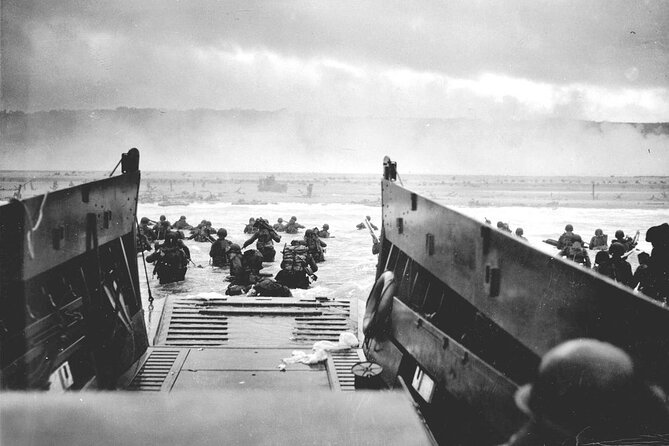
- Omaha and Utah Beaches were the sites of the D-Day landings, marking a major turning point in World War II.
- The 1st, 4th, and 29th American Infantry Divisions faced daunting assaults and heavy casualties in the invasion of these beaches.
- The strategic importance of securing the landing sites on D-Day was crucial for advancing towards Germany and liberating Western Europe.
- Visitors can explore the historic Omaha and Utah Beaches to gain a deeper understanding of the bravery, sacrifice, and strategic significance of the D-Day operations.
- The tour provides a comprehensive insight into the events that unfolded on D-Day, enhancing the understanding of this pivotal moment in WWII history.
Tour Overview
The tour begins with a comprehensive exploration of the historic Omaha and Utah beaches, where the American V Corps and VII Corps landed during the D-Day invasion of Normandy.
Participants will follow in the footsteps of the 1st, 4th, and 29th American Infantry Divisions, gaining insight into the WWII history of these legendary landing sites.
The tour covers the key sites, providing a detailed account of the events that unfolded on these fateful days.
Visitors will come away with a deeper understanding of the bravery and sacrifice that took place, as well as the strategic importance of these beaches in the Allied push to liberate Europe.
You can also read our reviews of more tours and experiences in Bayeux.
Key Sites Visited
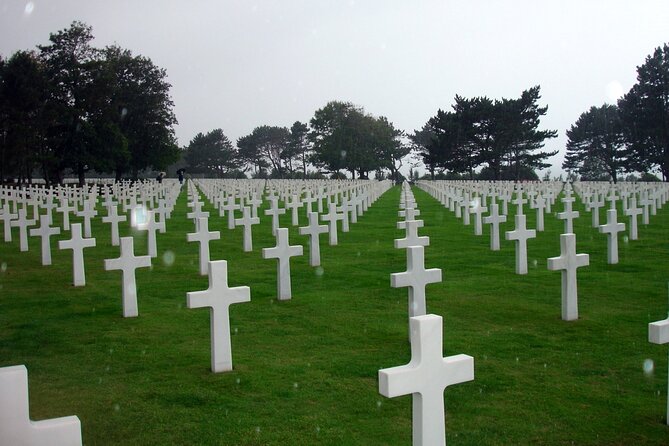
Visitors explore the renowned Omaha Beach, where the American V Corps faced a daunting assault and suffered heavy casualties during the D-Day landings.
They then venture to the neighboring Utah Beach, where the American VII Corps achieved a more successful landing, securing a critical foothold for the Allied advance.
The tour provides insightful perspectives on the WWII history of these pivotal beaches:
- Exploring the strategic importance of the landing sites and the challenges faced by the Allied forces
- Gaining an understanding of the horrific battles that unfolded on the beaches and the immense sacrifices made by the soldiers
- Reflecting on the courage and resilience that ultimately led to the success of the D-Day invasion.
American Infantry Divisions
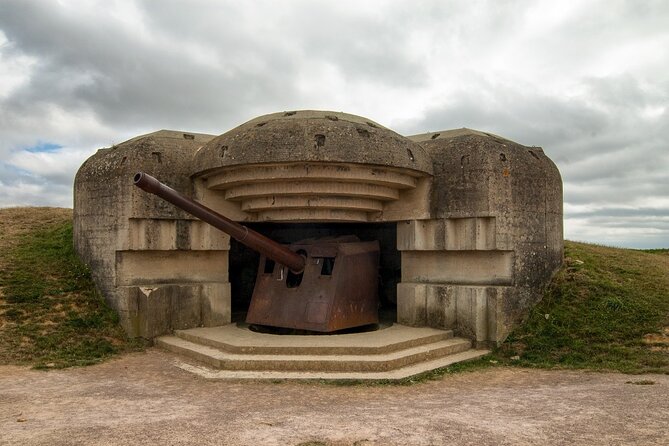
Though the Omaha Beach landing was a brutal assault that resulted in heavy American casualties, the 1st, 4th, and 29th Infantry Divisions persevered, steadily advancing inland to secure a critical foothold for the Allied forces on D-Day. The 1st Infantry Division, nicknamed the "Big Red One," spearheaded the assault and faced fierce German resistance. The 4th Infantry Division, meanwhile, overcame obstacles on Utah Beach and linked up with the 1st. The 29th Infantry Division, too, fought valiantly, eventually reaching its D-Day objectives.
| Division | Landing Beach | Notable Actions |
|---|---|---|
| 1st | Omaha | Secured critical foothold |
| 4th | Utah | Linked up with 1st Division |
| 29th | Omaha | Reached D-Day objectives |
WWII Normandy History
On June 6, 1944, Allied forces launched the largest amphibious invasion in history, storming the beaches of Normandy in northern France to begin the liberation of Western Europe from Nazi occupation. Codenamed ‘Operation Overlord,’ this pivotal D-Day assault marked a major turning point in World War II.
American, British, Canadian, and other Allied troops fought to secure a beachhead and push inland against fierce German resistance.
The invasion of Normandy was a monumental undertaking, requiring meticulous planning and coordination. Key aspects of the WWII Normandy history include the massive scale of the D-Day landings, involving over 150,000 Allied troops, and the heroic actions of soldiers who faced withering enemy fire on the beaches.
The strategic importance of securing a foothold in northern France to advance towards Germany was a crucial factor in the success of the Normandy invasion.
Inclusions and Pricing
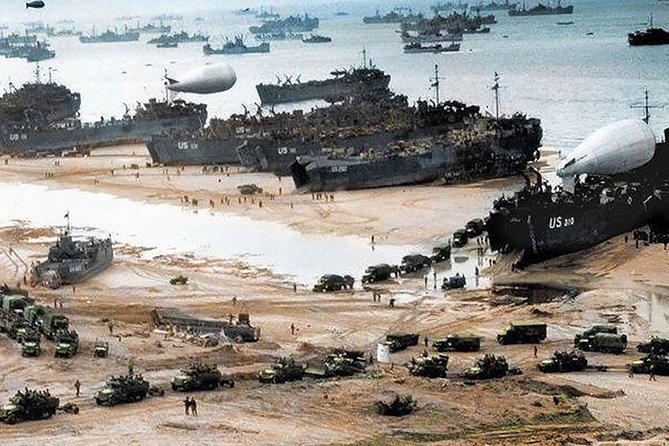
The tour package includes a driver/guide, local guide, and professional guide to provide comprehensive insight into the WWII history of Normandy’s landing beaches.
The private vehicle transportation ensures a comfortable and seamless experience as you follow in the footsteps of the 1st, 4th, and 29th American Infantry Divisions.
The tour covers the key sites like Omaha and Utah beaches, where the American V Corps and VII Corps landings took place.
With confirmation within 48 hours of booking, the tour is accessible to a maximum of 16 travelers. Guests can also cancel up to 24 hours in advance for a full refund, making the experience flexible and hassle-free.
Meeting and Pickup
The tour begins at the Place du Québec in Bayeux, France, where guests will meet their driver and guides for the day’s exploration of Normandy’s historic landing beaches.
At this central meeting point, your group will be welcomed and prepared for the immersive experience ahead.
The tour ends back at the same location, providing a convenient starting and ending point for your journey.
Key highlights of the meeting and pickup include:
- Centralized meeting location in the heart of Bayeux
- Easy access for guests arriving from various locations
- Seamless transition from greeting to departure at tour’s end
This well-organized meeting and pickup ensures a smooth start and finish to your Normandy excursion.
Additional Information
This tour accommodates travelers with limited mobility, as it’s stroller accessible and allows service animals. Infant seats are available upon request. The tour also departs from and returns to a location near public transportation, making it convenient for guests arriving from various areas.
| Features | Details |
|---|---|
| Confirmation | Within 48 hours of booking, subject to availability |
| Accessibility | Not wheelchair accessible |
| Group Size | Maximum of 16 travelers |
| Cancellation | Can cancel up to 24 hours in advance for a full refund |
The tour provides a rundown of the Normandy landing beaches, allowing visitors to follow in the footsteps of the brave American soldiers who fought in this historic battle.
Cancellation Policy
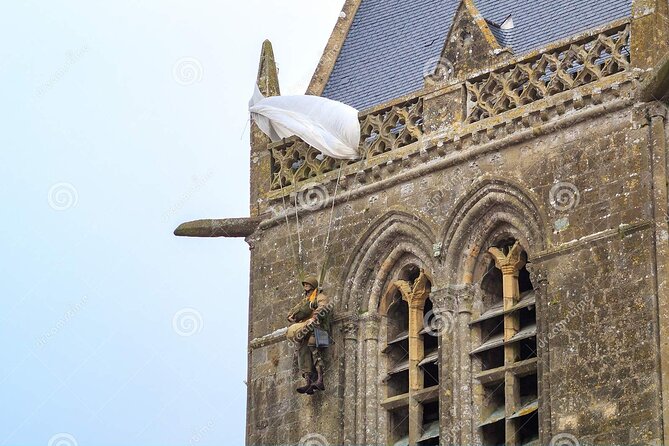
Guests can cancel their tour up to 24 hours in advance for a full refund, but there’s no refund for cancellations less than 24 hours before the start time. This flexible cancellation policy allows travelers to plan their trip with confidence, knowing they can adjust their plans if needed.
Cancellations must be made at least 24 hours prior to the tour start time to receive a full refund. No refunds are given for cancellations made less than 24 hours before the tour.
This policy ensures the tour operator can accommodate last-minute travelers and maintain a reliable schedule.
Frequently Asked Questions
How Long Does the Tour Typically Last?
The tour typically lasts around 8 hours, providing travelers with ample time to explore the key historical sites and gain insights into the pivotal WWII events that unfolded across Normandy’s landing beaches.
Are There Any Stops for Food or Refreshments?
The tour includes stops for food and refreshments along the way, allowing travelers to replenish and experience the local cuisine at their leisure. Participants can expect a well-balanced itinerary with ample opportunities to refuel during the excursion.
Can We Take Photographs During the Tour?
Participants are welcome to take photographs during the tour. The guide will provide ample opportunities to capture the historic sites and scenic landscapes along the way. Photography is encouraged to help commemorate the memorable experience.
Is There an Option to Customize the Tour Itinerary?
Yes, the tour operator allows guests to customize the itinerary. While the standard tour covers key WWII sites, the guide can accommodate requests to adjust the pace and focus based on individual interests.
What Is the Dress Code for the Tour?
The tour has a casual, comfortable dress code. Visitors are advised to wear weather-appropriate clothing, sturdy walking shoes, and bring sun protection and layers as needed. There’s no formal attire required for this historical tour.
Final Words
The D-Day landings at Omaha and Utah Beaches marked a pivotal moment in World War II.
The courage and sacrifice of the American infantry divisions who fought there paved the way for the Allied liberation of Western Europe from Nazi occupation.
Visiting these historic sites provides a profound connection to the events that changed the course of the war and the world.
More Tour Reviews in Bayeux
Not for you? Here's more things to do in Bayeux we have recnetly reviewed
- Normandy Landing Beaches: Private Day Tour from Bayeux
- D-day: Omaha Beach tour with transportation from Bayeux
- From Paris: Normandy D-Day Beaches Full-Day Historical Tour
- Omaha Beach : Guided Electric Bike Tour
- From Bayeux: American D-Day Sites in Normandy Full-Day Tour
- From Bayeux: Mont-Saint Michel Guided Tour
- Normandy: 2 Days Tour D-Day, Normandy from Bayeux
- Discover Bayeux: A Private Walking Tour With Local Guide
- D-Day Unveiled : Museums & Mulberry Harbors Tour from Bayeux
- E-Bike food tour !
- Bayeux: Normandy D-Day Landing Beaches Full-Day Guided Tour
- Bayeux: 9.30 DAILY 2-HOUR WALKING GROUP CITY TOUR IN ENGLISH
